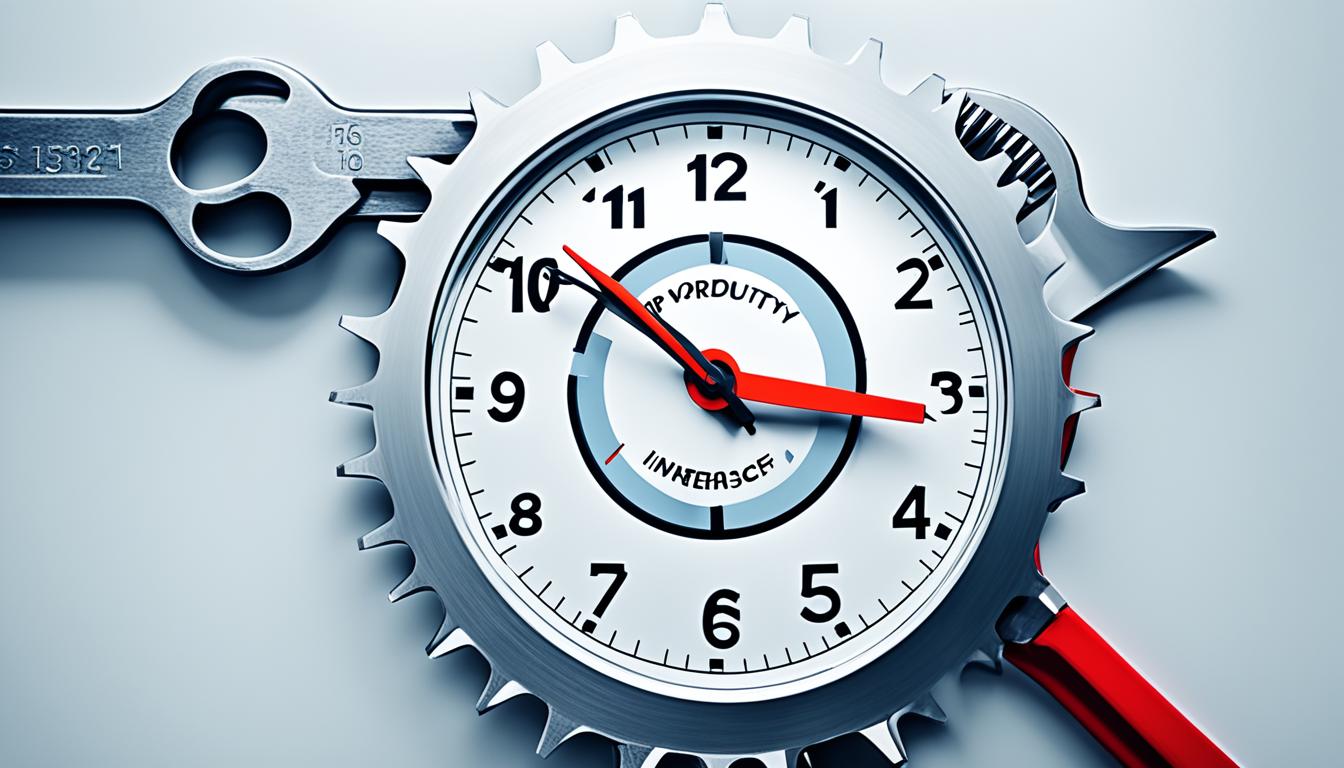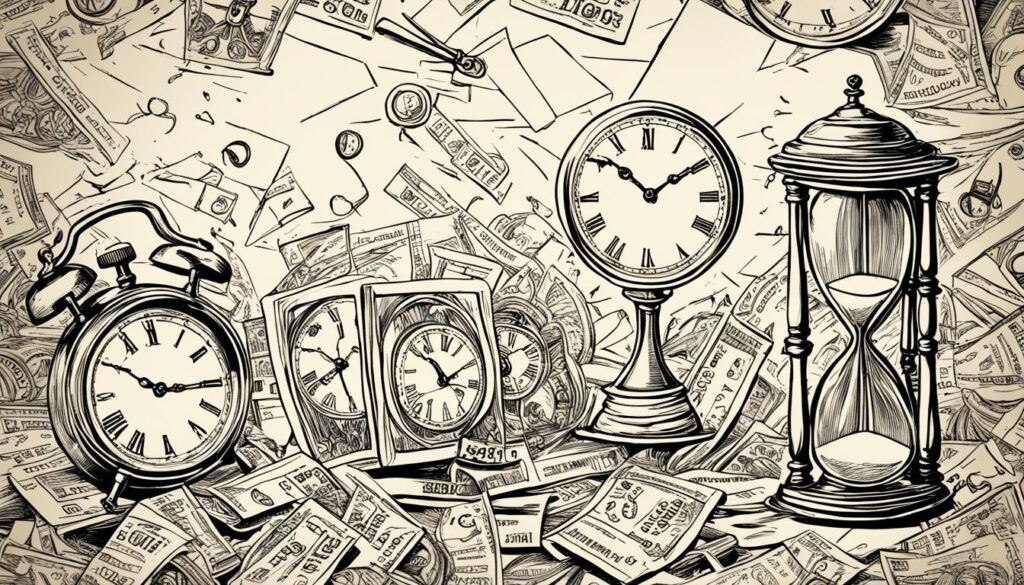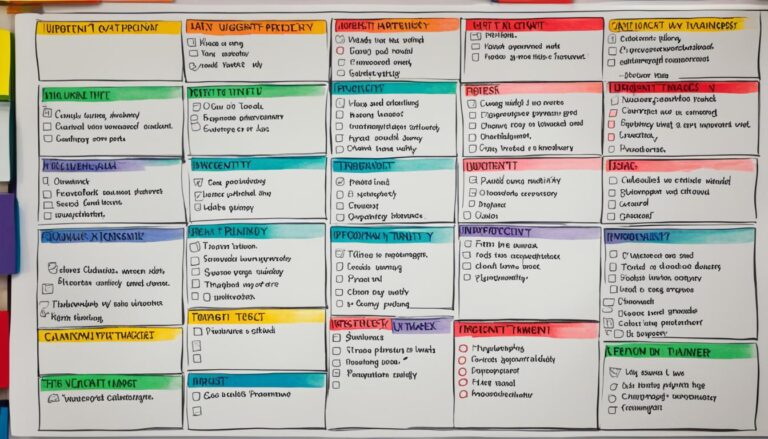Maximize Your Time and Labor Efficiencies Today!

Are you struggling to optimize your workforce management? Do you find it challenging to maximize productivity and achieve your goals? It’s time to challenge common beliefs and uncover the key to unlocking your time and labor efficiencies.
In a world where labor shortages and an aging workforce pose significant challenges, it’s essential to find innovative solutions that can revolutionize your approach to work. The traditional way of managing time and labor may no longer be sufficient. So, how can you adapt and thrive in this changing landscape?
By implementing cutting-edge strategies and leveraging the power of technology, you can optimize your workforce management, boost productivity, and achieve a competitive edge. Discover the untapped potential of your workforce and take control of your time and labor resources.
Key Takeaways:
- Labor shortages and an aging workforce are challenges impacting labor availability.
- Implementing autonomous mobile robots (AMRs) can improve labor efficiency and productivity.
- Time management and prioritization are crucial for improved efficiency in the workplace.
- Debunking myths about work efficiency can lead to a clearer understanding of how to improve productivity.
- Setting achievable goals and creating a productive work environment are strategies for increasing work efficiency.
Improving Efficiency in the Workplace
Improving efficiency in the workplace is about helping employees work smarter, not harder. By optimizing various factors that affect employee efficiency and productivity, businesses can enhance their overall performance. Factors such as the work environment, job satisfaction, training, and culture play a significant role in determining employee efficiency.
Effective time management is crucial for improved efficiency. Employees should be equipped with the necessary tools and resources to manage their time effectively. One way to achieve this is by implementing employee scheduling and time tracking software. This allows employees to prioritize tasks, allocate their time efficiently, and stay on top of deadlines.
Collaboration within teams is another vital aspect of workplace efficiency. When colleagues effectively communicate and work together, productivity levels skyrocket. Managing expectations, delegating tasks based on individual strengths, and valuing each other’s time can streamline collaboration and eliminate unnecessary bottlenecks.
Regular performance management and setting achievable goals contribute to improved efficiency. By providing employees with clear objectives and fostering a growth mindset, businesses create an environment where individuals strive for excellence and continuously seek ways to enhance their efficiency.
Overall, improving efficiency in the workplace requires a holistic approach that encompasses time management, collaboration, and goal setting. By implementing these strategies and leveraging tools such as employee scheduling, time tracking software, and performance management systems, businesses can unlock their full potential and achieve exceptional results.
Debunking Myths About Work Efficiency
Work efficiency is a crucial factor in maximizing productivity and achieving success in the workplace. However, there are several myths surrounding work efficiency that can hinder your ability to perform at your best. By debunking these myths and adopting effective strategies, you can unlock your full potential and improve your efficiency at work.
- Myth 1: Busy equals productive
- Myth 2: Multitasking increases efficiency
- Myth 3: Office work is more efficient than remote work
- Myth 4: Work efficiency is solely about working harder
Contrary to popular belief, staying constantly busy does not necessarily equate to being productive. While it may seem like you’re getting a lot done when you’re constantly occupied with tasks, the quality and effectiveness of your work may suffer. It’s important to prioritize tasks and focus on activities that contribute to your overall goals and objectives.
Another common misconception is that multitasking is an effective way to get more things done in less time. However, research has shown that multitasking actually reduces productivity and efficiency. When you switch between tasks, your brain needs time to refocus, resulting in decreased productivity and increased errors. Instead of trying to juggle multiple tasks simultaneously, focus on one task at a time and give it your full attention.
In today’s digital age, remote work has become increasingly popular and feasible. Contrary to the belief that office work is more efficient, working from home can be just as productive, if not more so, with the right environment and habits. Remote work eliminates commuting time and distractions commonly found in an office setting, allowing you to focus on your tasks and manage your time more efficiently.
Efficiency is not solely about working harder; it’s about finding ways to get the most output from the least input. This means identifying areas where you can streamline processes, automate repetitive tasks, eliminate unnecessary steps, and make the most of your time and resources. By working smarter, not harder, you can achieve greater efficiency and productivity.
To truly improve efficiency in the workplace, it’s important to let go of these myths and focus on implementing effective strategies for workforce planning, employee time management, and efficient scheduling.

Strategies for Increasing Work Efficiency
When it comes to improving work efficiency, setting reasonable goals is key. By establishing attainable objectives with realistic deadlines, you can focus your efforts effectively and stay motivated throughout the process.
To optimize your time and labor resources, refining your time management practices is crucial. Try chunking tasks into smaller, more manageable segments, allowing you to concentrate on one task at a time. Prioritizing your to-do list ensures that urgent and important tasks get done first, increasing productivity and reducing stress.
In our digitally-connected world, it’s easy to become overwhelmed and distracted. To combat this, consider reducing your reliance on digital devices during work hours. Limiting your screen time and taking regular breaks can help refresh your focus and maintain productivity throughout the day.
Learning to say “no” and delegating tasks can also significantly improve work efficiency. Recognize when you have reached your capacity and be comfortable handing off responsibilities to others. This allows you to focus on high-priority tasks while fostering teamwork and collaboration within your organization.
Creating a routine that works for you is another effective strategy for increasing efficiency. Find a schedule that aligns with your natural energy levels and keeps you motivated. Additionally, letting go of perfectionism can help you avoid getting caught up in unnecessary details and focus on completing tasks efficiently.
The work environment plays a vital role in productivity. Whether you work in an office or remotely, it’s essential to optimize your workspace for maximum efficiency. Keeping your workspace organized and free from distractions can help you stay focused and minimize wasted time searching for resources.
Lastly, making the most of your time is crucial for increasing work efficiency. Eliminate time-wasting activities and distractions that don’t contribute to your productivity. Plan your days strategically by scheduling your most important and challenging tasks during your peak energy levels.
By implementing these strategies, you can optimize your time and labor resources, improve productivity, and gain better control over labor costs. Remember, small changes can make a big difference when it comes to maximizing work efficiency.

The Importance of Work Efficiency
Work efficiency is vital for both individuals and businesses. When you optimize your productivity, manage your workforce effectively, and prioritize employee time management, you can achieve remarkable results. By maximizing your time and labor resources, you can unlock your full potential and achieve your goals.
For individuals, work efficiency allows you to accomplish more in less time. This means you can strike a better work-life balance, leading to increased job satisfaction and overall well-being. By managing your time effectively, prioritizing tasks, and utilizing productivity optimization techniques, you can make the most of each day and achieve your personal and professional aspirations.
Businesses also benefit greatly from improved work efficiency. When your workforce is managed efficiently and effectively, productivity levels soar. This translates into higher output, better customer satisfaction, and increased profitability. In today’s competitive market, businesses need to stay ahead by maximizing their time and labor resources. By implementing strategies such as workforce management and employee time management, businesses can streamline operations, improve efficiency, and achieve success.
One effective way to enhance work efficiency is through workforce management. This involves optimizing your workforce’s skills, assigning tasks strategically, and ensuring that the right people are in the right roles. By effectively managing your workforce, you can tap into their strengths and expertise, leading to increased productivity and overall team success.

Employee time management is another essential aspect of work efficiency. When employees effectively manage their time, they can prioritize tasks, meet deadlines, and avoid burnout. By utilizing time tracking software and implementing efficient scheduling techniques, employees can optimize their time and accomplish more in their workday.
Ultimately, work efficiency is crucial for individuals and businesses alike. It enables individuals to excel in their personal and professional lives while allowing businesses to maximize their resources and achieve sustainable growth. By prioritizing productivity optimization, workforce management, and employee time management, you can unlock your full potential and thrive in today’s fast-paced world.
Conclusion
Improving time and labor efficiencies is crucial for individuals and businesses. In today’s competitive landscape, optimizing the use of time and labor resources is essential for achieving productivity optimization and labor cost control. However, challenges such as labor shortages and aging workforce can pose obstacles to achieving these goals.
Fortunately, there are strategies that can help overcome these challenges. Implementing time tracking software enables businesses to effectively manage employee schedules and track their productivity, resulting in improved time and labor management. Additionally, autonomous mobile robots can be deployed to streamline processes, increase productivity, and reduce labor costs.
To further enhance efficiency, individuals and businesses should prioritize setting reasonable goals and refining time management practices. By establishing achievable goals and implementing effective time management strategies, individuals can optimize their time and accomplish more in less time. Creating a productive work environment that fosters collaboration and supports employee well-being is also crucial.
By embracing these strategies and optimizing time and labor resources, individuals and businesses can achieve peak efficiency and success. It is through the continual improvement of time and labor efficiencies that businesses can thrive in today’s fast-paced and competitive landscape, drive productivity optimization, and maintain labor cost control.
FAQ
How can I maximize my time and labor efficiencies?
To maximize your time and labor efficiencies, you can implement strategies such as workforce management and productivity optimization.
What are some ways to improve efficiency in the workplace?
There are several ways to improve efficiency in the workplace, including employee scheduling, using time tracking software, and implementing labor cost control measures.
What are some myths about work efficiency?
Some common myths about work efficiency include the belief that busy equals productive, that multitasking improves efficiency, and that working from home is less efficient than working in an office.
What are some strategies for increasing work efficiency?
Strategies for increasing work efficiency include implementing productivity optimization techniques, tracking employee time management, and controlling labor costs.
Why is work efficiency important?
Work efficiency is important because it leads to higher productivity, better customer satisfaction, and increased profitability for businesses. It also allows individuals to accomplish more in less time and achieve a better work-life balance.






